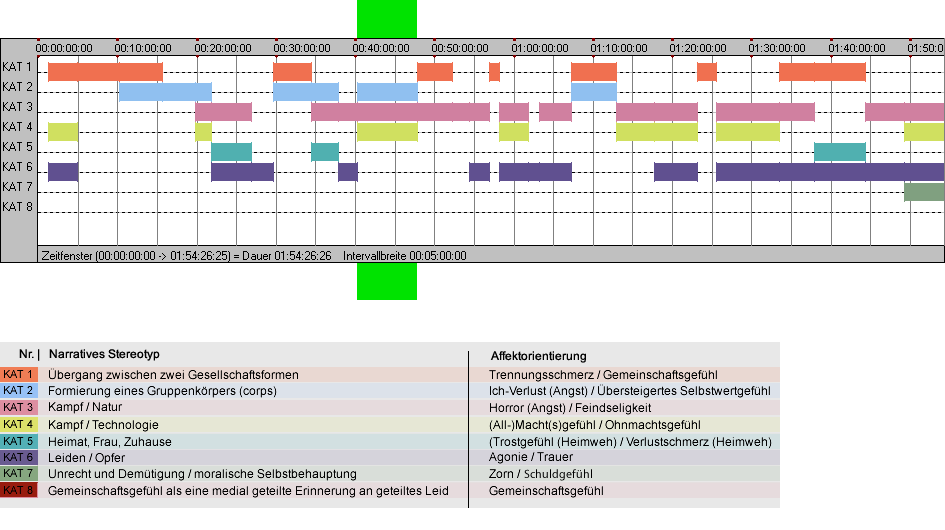To the weapons and battle*
Classification in categories
- Formation of a group body (corps)
- Battle and nature
- Battle and technology
Please enable JavaScript in Your browser.


Metadata
Movie: Bataan*
Number: 11
Individual analysis: Bataan*
Timecode start: 00:40:16:00
Timecode end: 00:47:47:01
Year of origin: 1943
The group’s triumphant desire to fight in the course of the bridge demolition is conveyed through character choreography, which is related to an arched movement. This arc goes through many stages from preparation to the end of the operation, namely: Waking up the soldiers and getting weapons, positioning, climbing down to the cliff, throwing grenades and a quick retreat back to camp. The affective dramaturgy is staged as a sequence that goes from tension to fearful expectation, fear, horror and finally relaxation, conveyed through the interplay of shot composition with sound design, camera movement and editing. Number: 11
Individual analysis: Bataan*
Timecode start: 00:40:16:00
Timecode end: 00:47:47:01
Year of origin: 1943
Regarding the choreography of Sergeant Dane, the scene can be divided into four sections: Waking the group until the soldiers stir, which arranges the soldiers’ bodies in a choreography and positions them (>EMU 1); an increasingly tense cohesion of the soldiers scattered throughout the space through personal inspection by Sergeant Dane, staged as one long camera movement. A short pause follows that creates fearful anticipation (>EMU 2); tension that moves into horror step by step in the secret creeping downhill advance in a ducked posture through the foliage to the cliff, close to the faceless enemy, continuously underscored by the music, (>EMU 3); intense tension along the same path in the scurrying, hurrying movement towards camp and, during the group's return, the ecstasy conveyed by the editing of the chaotic exchange of shots with the Japanese, which transitions to relaxation with the cook’s last shot (>EMU 4). HJC
Expressive movement units
01 02 03 04Materials about the scene
Position of the scene in the film





